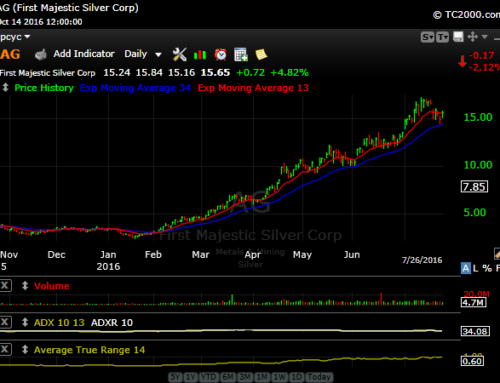I’ve been an observer of the financial markets for over three decades now.
More than once I’ve gotten caught up in the hype of news suggesting that a certain market should go in a particular direction.
That hype was usually wrong.
The first time this happened was the 1994 stock market, which is interesting, because that is the year I learned about the trend following approach to trading.
It was clear to me, and many of the talking heads at the time, that the stock market needed to go into a bear market because of a rise in interest rates due to some inflationary pressures.
Indeed, the stock market struggled that year, but the S&P 500 barely managed a 10% correction after a surprise rate hike in February that year.
Meanwhile, the 30 year Treasury Bond continued an awful bear market until November 1994. As I recall, this took rates on the 30 year to over 8%.
This is the chart of the S&P 500 from late 1993 to early 1995, with the US Treasury Bond futures in red.
After the decline in bonds came to an end and started making multi-month highs in December, stocks began to take off.
By March 1995, the S&P 500 was making new all-time highs, and this was the start of a massive bull-market that continued until 2000, with a couple hiccups along the way.
Fast forward to now.
Since Spring of 2020, when the Fed started set the dial on the money printing press to its highest rate ever in response to a global economic shutdown, Treasury Bonds have endured their worst bear market ever.
After the initial steep decline in early 2020, however, stocks managed to make substantial gains until early 2020, as it became clear that the Fed needed to hike rates in response to high inflation.
The yield curve became inverted for the first time, briefly, in Spring 2022. It then inverted again a couple months later, and has remained inverted ever since.
A yield curve inversion, however you measure it (2 year yield/10 year yield or 3 month yield/10 year yield) for more than a couple weeks typically signifies a recession is incoming.
While economic growth has indeed been weak, that recession has not yet occurred.
After a pretty steep bear market in stocks in 2022, the market has rallied pretty significantly. Whatever recession was supposed to be coming was already priced into the market by October last year.
One more example
Remember that war in Ukraine?
Yeah, that was supposed to be a big deal for the wheat market, as Ukraine is one of the biggest producers of wheat on the planet.
Indeed, when Russian tanks first rolled into Ukraine, the wheat futures exploded. That provided a massive opportunity for agile futures traders.
But, look what has happened since…
This is a weekly chart of wheat futures dating back to July 2021. Wheat futures prices are well below the pre-invasion prices.
This even comes on the heels of news that Russia pulled out of a deal to allow Ukraine wheat shipments and has been bombing the port city of Odessa, where some wheat is shipped from.
Conclusion
Ultimately, I have found that forecasting future market direction based on looking at fundamental inputs can often result in missing out on big moves.
To grow your capital substantially, you’ve got to be in position to exploit big trends.
If you are sitting on the sidelines, or actually shorting a market that is going up, and vice versa, you are going to underperform badly, and fail to grow your capital.
Bottom line… don’t be wedded to your opinions… they can be costly if wrong.
If you’re interested in getting my perspectives on the markets and other important stuff, check out my Scott’s Intel newsletter.








Leave A Comment